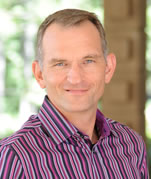Donnelly Gets NSF Grant to Answer Plasma Physics Energy Question
October 15, 2013
Utilizing some of the most powerful laser systems in the world, Harvey Mudd researchers will create and study some of the smallest specimens.
Physics Professor Tom Donnelly specializes in high-intensity, laser-matter interactions. In short, he points lasers at sub-micron targets, blasts them into plasma and studies the resulting particle properties and deposited energy.
In the past 20 years, he and his students have worked with physicist Todd Ditmire, high-powered laser inventor and director of the High-Intensity Laser Science Group at the University of Texas in Austin. Now, Donnelly and Ditmire have been awarded a $255,000, three-year National Science Foundation grant to answer the question, “By what mechanism do high-intensity laser pulses deposit energy into a wavelength-scale target?”
The research will help advance basic plasma physics and may have possible applications in developing better X-ray and neutron sources for radiography and in serving as a test bed for fusion research.
“The interaction of the laser pulse with a small target has the potential for coupling large amounts of energy into small volumes so you can get incredibly hot, dense sources, which can generate particles such as neutrons and X-rays,” said Donnelly.
Donnelly and his student researchers are working on a device that deposits sub-micron-sized polystyrene spheres onto a silicon surface. They’ll use a 1-megawatt laser to eject the particles from the silicon and, as the particles move out from the surface, they’ll hit them with a 20-terawatt laser and record the energy spectra of the resulting electrons.
The pulse of the 20-terawatt laser has nearly 10 times the power of the nation’s electrical grid. The polystyrene spheres are half-micron and smaller in diameter—tiny targets, considering the diameter of an average human hair is about 50-100 microns.
“We have a model that suggests how to optimize the amount of energy Todd’s high-power laser can deposit into small targets. To test the model, we’ll record the energy of electrons that result from the laser-target interaction as we change target size and laser power,” Donnelly said.
Donnelly and his research students will build the machine that will deliver the targets to the focus of the high-power laser. They will also travel to the University of Texas to participate in the laser-target interaction experiments.
